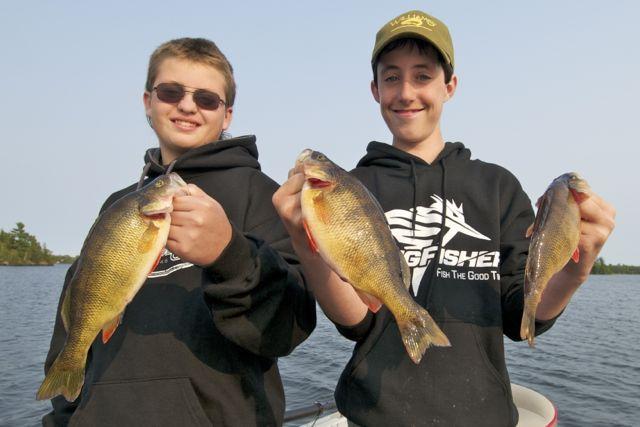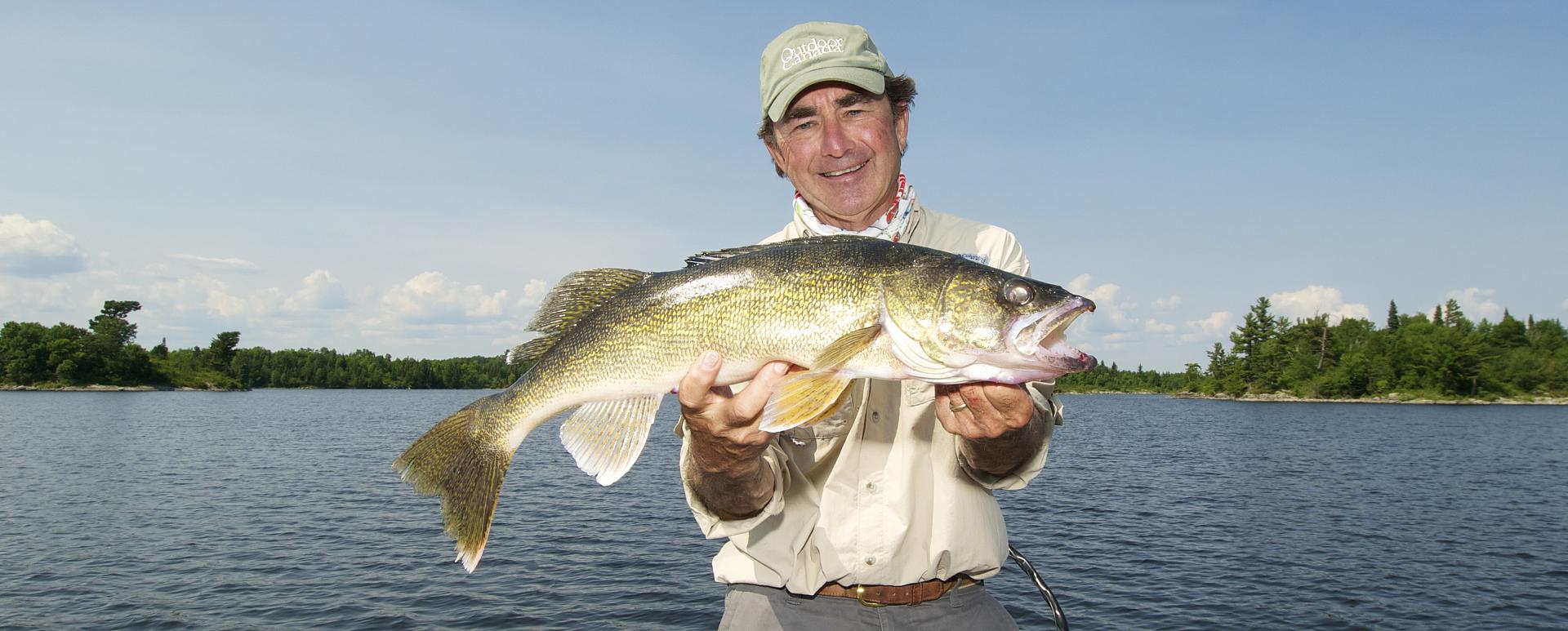Think bass are the only fish you can catch with a drop-shot rig?
Think again. Look out walleye, crappies, perch, trout and whitefish
Advertisement
CRAPPIES AND PERCH

When I drop-shot for crappies and perch, I like to prepare a traditional bass rig because I find it more subtle. Simply run the end of your line through the eye of a small Gamakatsu Split Shot/Drop Shot hook or Finesse Wide Gap hook, entering first from the hook point side. Next, run a good amount of the tag end back through the eye so that you’ve doubled the line, and tie a simple Palomar knot.
Now, here’s the critical part. Instead of trimming off the tag end, pass it back down through the eye of the hook and pull the knot snug. When you do this, the hook will kick out smartly at a 45-degree angle, with the tip pointed up.
Advertisement
For crappies and perch, I like fused lines, such as Sufix Fuse for my main line, usually four-pound test, along with two- to four-pound-test monofilament or fluorocarbon leaders. If there are walleye mixed in, I might go five- or six-pound test for my main line, which is the same diameter as the lighter two- to four-pound leaders.
And even though I occasionally use a small minnow for bait, more often I dress the hook with a small soft-plastic nymph or creature, such as a Mister Twister Exude Nymph, Cabela’s Go-To Crappie Tube or Trigger X Flap Tail Grub (below), Minnow or Wingding.
Advertisement
While it doesn’t hurt to shake your bait once your drop-shot sinker has hit the bottom and you’ve tightened up slightly on the line, the biggest mistake most anglers make is overworking their lures (see “Shake the bait” on final page). If a subtle shake is good, they reason, non-stop action must be even better. It isn’t. With most fish in general, but for crappies and perch in particular, you’d be amazed at how many are caught when the drop-shot bait isn’t moving at all.
One of the rewards of drop-shotting, since there’s no terminal tackle between you and the hook, is that bites are easier to detect. And if you use a non-stretch braid or gel-spun main line, you’ll have an even higher percentage of hook-ups. It gets even better when you present your bait vertically over the side of the boat. Indeed, in the spring when crappies are schooled along the outside edge of a pencil reed bed, or later in the summer when they’re patrolling a deep weedline, I’ll use a seven-, eight- or even nine-foot-long rod to drop my bait smack dab in front of their faces.
Advertisement
Ditto in the fall when jumbo perch are schooled up in huge numbers along the edges of deep rocky structures. You can sit over top of them, holding yourself in position with the electric trolling motor, and vertically present your bait. And since you can easily adjust and fine-tune the distance between your hook and weight to coincide with the height at which the fish are suspending, you can be certain your bait is perfectly positioned.


